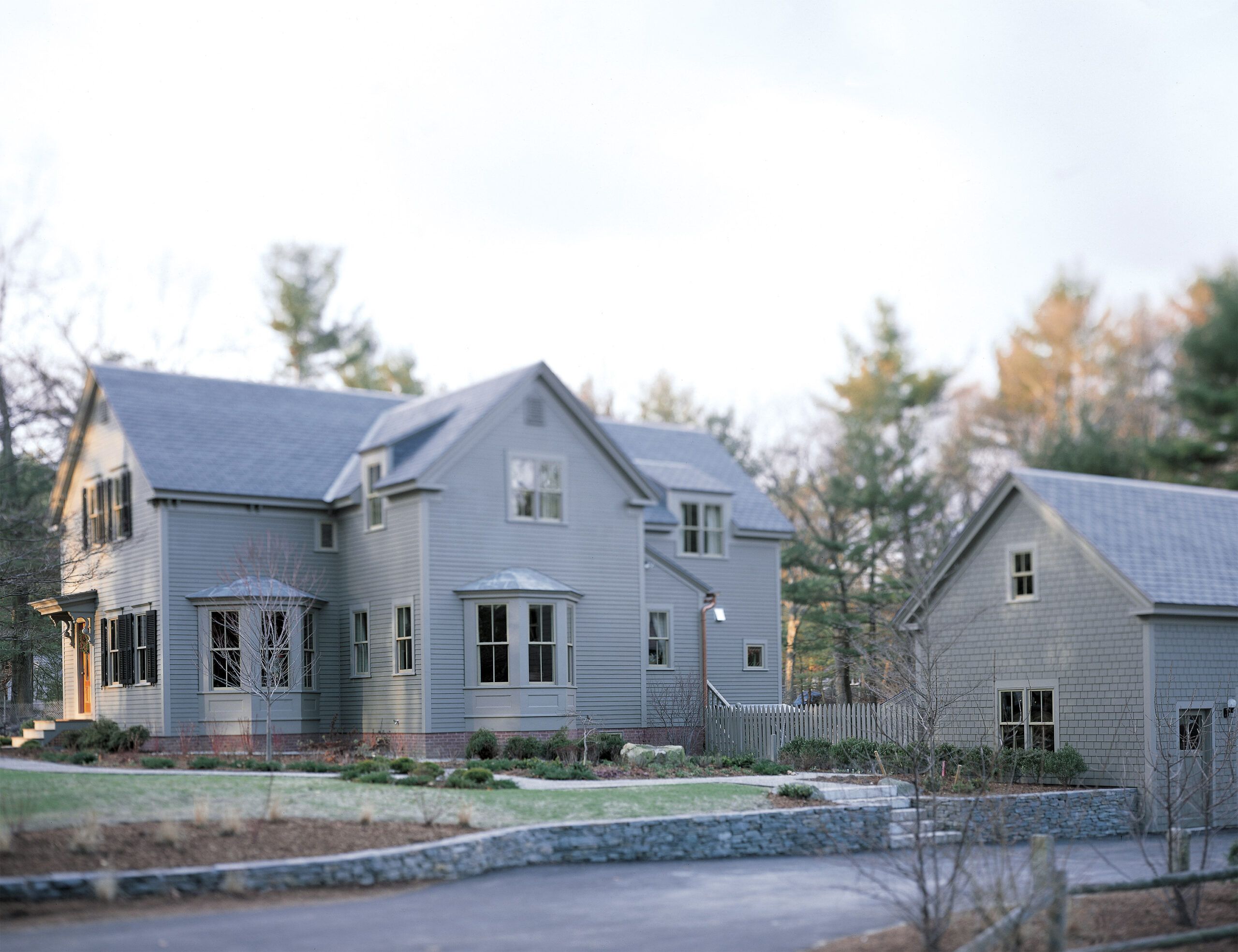All of us at This Old House remember where we were when the news came that Dick and Sandy Silva had lost just about everything in a raging house fire. It was early spring of 1999, and the show was finishing up the Key West project. It didn’t take us long to join the rest of our Boston-area friends in the trades as everyone pitched in to put the Silvas back under a new roof.
Ten months later, we all cheered at the Billerica wrap party when Dick announced that he had just received a certificate of occupancy from the town; the family would be back in for Christmas. It was a great moment: a victory of hard work over tragedy.
The project was more than just a private journey for the Silvas and those who worked to rebuild their house. Ten million viewers had watched from the first news footage of the burning house to the hanging of a wreath on the new front door. In the process, some interesting lessons emerged:
Fire safety
We built the new house with the reason for its predecessor’s demise firmly in mind. At a dollar per square foot, the whole-house sprinkler system proved to be a fairly easy and low-cost way to insure against disaster. We also made sure that the hard-wired smoke detectors were tied into a central facility with round-the-clock monitoring; one reason the fire had taken the original house was that the smoke detectors went off in an empty house—with no one to hear them, they did no good.
Period architecture
Our architect proved that just because a building is brand-new, it doesn’t have to look it. Drawing from historic examples in town, Chris Dallmus designed a house that serves a modern family yet looks as if it has been on the lot since the turn of the century. The finishes we chose furthered that look. The mahogany front door’s two arched etched-glass windows were quintessentially Victorian, as was its hand-cast reproduction brass hardware. Narrow strip-oak flooring complemented the wainscoting in the front hall and dining room, while authentic linoleum and fir cabinets and beadboard made the kitchen and pantry seem like your grandmother’s. All the lighting fixtures were reproductions of actual turn-of-the-century models. And extra efforts were made to hide the house’s high technology: the flat-screen TV, when not on, disappeared behind raised panelling over the fireplace, and the audio/video equipment operated in a well-ventilated space inside a china cabinet made of beautifully figured tiger oak.
Low maintenance
Dick Silva is a builder. He didn’t want to have to spend his weekends forever repainting and repairing. By using a whole suite of synthetic materials, we greatly lengthened the building’s maintenance cycle. The fiber-cement siding will not rot or crack, and its stability over time and through varying weather conditions will allow it to hold its paint for much longer than wood. All the decorative moldings and railings are made of expanded urethane, similarly stable and rot-impervious. They too will not need much in the way of attention. The slates on the roof, made from recycled plastic and rubber, are warranted for 50 years. The windows are built out of a wood-plastic composite that shares the same long-lasting, low-maintenance qualities as the siding and trim. And, as an important precaution, the entire foundation—under the slab and around the perimeter—was treated with a long-lasting termiticide that should keep the neighborhood wood-eaters at bay.
Energy efficiency
Highly insulated with expanded foam, with low-e windows, the building is tight as a Thermos bottle. Its high-efficiency gas boiler won’t have to work very hard to warm it in the winter, nor will it take much a/c to cool it.
“Greenness”
The manmade materials we chose significantly lessened the amount of wood used in the building. From the wooden I-joists made from small-caliper trees to the composite windows, which use sawdust from the maker’s conventional window manufacturing waste stream, the resource savings added up. The urethane moldings and fiber-cement siding used no wood at all. As mentioned, the roof slates were made from plastic and automotive rubber that might otherwise have ended up in landfills. The ingredients of the linoleum were as natural as could be: linseed oil, limestone, wood flour and tree resin.
When we left them, life for the Silvas was beginning to gain some semblance of normalcy. Sandy had begun rebuilding her collection of cookie jars, and she and Dick had found an antique Hoosier to replace the one they’d lost in the fire. Daughters Janeen and Danielle’s Beanie Baby stash was growing once again, thanks in part to new ones folks sent them from around the country. Someone at the company that made the Silvas’ safe had caught the episode in which, water-soaked, the salvaged safe had been cut open on-air. The company honored their guarantee by shipping in a replacement. And the fire-damaged rhododendrons that Roger Cook had insisted on saving as reminders of the old home were in the ground again, growing alongside the new plants in the landscaping surrounding the new house. Pretty symbolic, we thought.
Tom Silva estimates that, in the real world, the house would have cost around $225 per square foot to build—a number which does not include the environmental mitigation involved in the oil clean-up after the fire.

